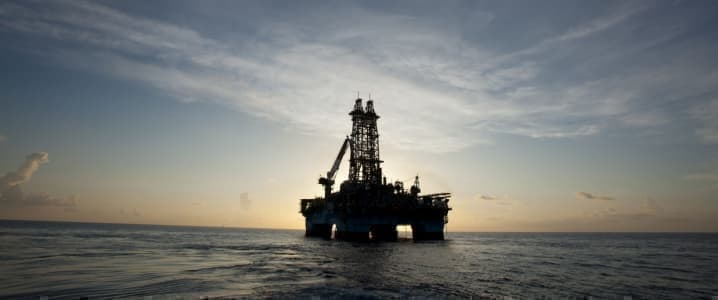Despite multiple signs that the global offshore drilling market has left the worst of the downturn behind, investors have yet to buy the narrative that offshore rig providers are good investment.
Despite the signs of recovery—albeit a slow one—the share prices of offshore drilling services companies have slumped over the past year, according to Bloomberg estimates, in what Pareto Securities’ head of investment banking Tormod Hoiby described as an “absolutely horrible year” for offshore service groups.
At the Oil & Offshore Conference in Oslo last week, the top executives of the biggest offshore rig providers admitted that they had let down investors in a big way, but noted that the current equity prices are now an opportunity to invest in offshore drilling services firms.
“As an industry we have let down equity investors,” Anton Dibowitz, chief executive officer and president of Seadrill, told ShippingWatch in an interview published last week.
At the Pareto conference, Seadrill said that offshore barrels are critical to meet future oil demand and that offshore breakevens are now competitive with shale breakevens as the recovery continues and the market is improving, according to Seadrill’s presentation at the conference in Oslo.
Tighter jack-up capacity is driving day-rate appreciation, Noble Corporation’s president and CEO, Julie J. Robertson, said at the same conference. Since Q4 2017, the day rates for jack-ups have increased by 80-90 percent in the North Sea, by 50-70 percent in the Middle East, and by 15-25 percent in Australia, Noble said in the presentation at the conference.
The company noted that there are encouraging indicators of activity with project economics supported by lowered costs and technology advances. In addition, exploration activity is on the rise, geological success rises, and further fleet attrition is expected, according to Noble. Related: Russia Capitalizes On America’s Thinly Stretched Middle East Focus
Pacific Drilling said at the Pareto conference that offshore supply will be the largest contributor to reserve replacement, and offshore projects are providing healthy cash flows to the exploration and production (E&P) companies. Offshore capital expenditure and floater demand continue to increase, Pacific Drilling said.
“Equity prices should increase towards mid?cycle valuations as utilization pushes higher and day rates rebalance,” the company said in its presentation.
Pacific Drilling’s equity trades at a significant discount to most peers on enterprise value (EV)/Rig basis, it says.
While offshore rig providers claim that they are a good investor play, they admit that there is a discrepancy between improving offshore drilling market and sliding share prices.
Borr Drilling, for example, noted in its Q2 financials presentation the total disconnect between rising day rates for rigs and sliding share price of the company over the past year.
Transocean’s Vice President Jeremy Lake had this to say on the Q2 conference call:
“Reserve replacement ratio for many of our customers continue to decline and our customers are coming off a year during which they collectively generated record cash flows. So it should come as no surprise that utilization rates and day rates have moved off of the bottom and every major operating base around the world.”
In an H1 market update, Maersk Drilling said last month that “with stronger free cash flow generation among oil companies, and more financially robust projects supporting increased sanctioning of new projects, demand for offshore rigs is expected to continue increasing.” Related: Saudis Scramble To Restore 1/3 Of Disrupted Oil Production Today
However, Maersk Drilling noted that the “timing and magnitude of the recovery, particularly in the floater segment, remains uncertain.”
Drilling contractors have reason to be mildly optimistic this year, Rystad Energy said in June, while Westwood Global Energy Group said in July that there was improvement in the offshore rig market over the past 12-18 months, although utilization remains below the 2010-2014 average.
“While there remain some regional markets which continue to be challenged, the rig market as a whole appears to have emerged from one of the worst downturns in its history,” said Matt Adams, Senior Analyst, Rigs & Wells at Westwood.
“Whilst, even in the most optimistic scenario, it seems unlikely that the offshore rig market will return to the heights of the previous upturn, there should no-doubt be cautious optimism,” Adams said.
Analysts and rig providers are optimistic about the future of the offshore segment, but equity investors have yet to come on board.
By Tsvetana Paraskova for Oilprice.com
More Top Reads From Oilprice.com:
- Bill Gates Says $11 Trillion Anti-Oil Push Isn’t Working
- Why Oil Prices Just Fell 6%
- Home Energy Storage Capacity Breaks Records In US


















